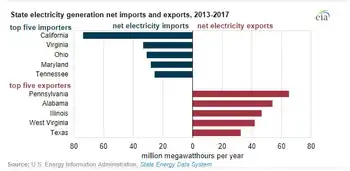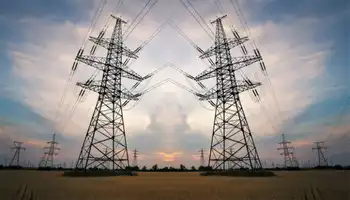Farmers urge corn for coal plants
ONTARIO - It may sound like a corny idea, but the association representing farmers in Ontario wants the province to burn corn instead of dirty coal as a way of lowering emissions from generating stations such as Nanticoke.
The Ontario Federation of Agriculture says that about 15 per cent of Ontario's corn and other grains — as well as corncobs that might otherwise be discarded — could displace enough coal at the Nanticoke and Lambton generating stations to produce up to 1,000 megawatts of power, equivalent to the electricity demand of 250,000 homes.
It would be cleaner, carbon-neutral power containing no heavy metals like mercury and far fewer sulphur oxides, a key ingredient in smog.
"We happen to think we have an offer here that deals with air quality questions, farming questions and the necessary transition from hydrocarbons to carbohydrates," said Ted Cowan, a researcher with the federation. "Coal to corn is going to happen."
But before it happens, Cowan said the industry needs to conduct a $650,000 study to look at how much corn, wheat and crop byproducts could be mixed with coal without harming the expensive boilers and other equipment at generating stations such as Nanticoke.
The federation is hoping the Ontario government can contribute $200,000 toward a study, which would take about six months and be done in partnership with Kinetrics, the research arm of the former Ontario Hydro.
"The research will give a good indication of how much grains and what types, whether corn or wheat, can be used in plants like Nanticoke," Cowan said.
"Whether that turns out to be 5, 10, 15 or 20 per cent is an open question. But if that information is available before the next planting season, and Ontario Power Generation commits to a particular percentage, we can provide it. We can grow it right here in Ontario."
Other groups have suggested converting the coal plants to natural gas, retrofitting them with "cleaner coal" technologies, or tearing them down like the Lakeview Generating Station in Mississauga.
Rick Whittaker, vice-president of investment at Sustainable Development Technology Canada, called burning corn a "short-term fix" to the province's energy crisis.
"It may be a Band-Aid solution to avoid using more coal, but it certainly isn't a long-term solution," said Whittaker, pointing out some of the same potential pitfalls facing the ethanol industry, which at the moment also relies on corn. "There may be a supply issue and food-versus-fuel issues."
The massive Nanticoke generating station, targeted for closing in 2009, would have been the last coal-fired plant in the province to be taken offline had the McGuinty government stuck with its latest schedule. But the government's plan was put on hold in March after it became clear that meeting the schedule would put the electricity system at risk.
Energy Minister Dwight Duncan ordered the Ontario Power Authority to come up with a new plan and look for ways to temporarily lower emissions from existing coal plants until they can be permanently closed.
Jan Carr, chief executive of the power authority, told the Toronto Star recently that using corn and other biomass as a way to offset coal use is one of several approaches being considered.
To the delight of the agriculture federation, any move to directly use crop grains for power generation would help struggling grain farmers by driving up market prices. But Cowan said the increase would be offset by larger economic gains within the province.
"We're absolutely certain we could keep the price at under 6.5 cents per kilowatt-hour, and likely under 5.5 cents per kilowatt-hour," he said.
But higher corn usge could pose a problem for another emerging market that relies on corn and wheat grain as a feedstock for ethanol, a clean biofuel used in transportation. If large-scale power generators start burning huge quantities of grain, what will it mean for ethanol production?
Kory Teneycke, executive director of the Canadian Renewable Fuels Association, said he's not worried about competition.
He said any major increase in corn prices will merely drive the ethanol industry to consider new production processes and sources of feedstock, such as cellulosic processing of agricultural waste.
"If corn becomes too expensive, it creates a market for cellulose," he said.
Related News

Hydro-Quebec adopts a corporate structure designed to optimize the energy transition
MONTREAL - As Hydro-Québec prepares to play a key role in the transition to a low-carbon economy, the complexity of the work to be done in the coming decade requires that it develop a global vision of its operations and assets, from the drop of water entering its turbines to the behind-the-meter technologies marketed by its subsidiary Hilo. This has prompted the company to implement a new corporate structure that will maximize cooperation and agility, making it possible to bring about the energy transition efficiently with a view to supporting the realization of Quebecers’ collective aspirations.
Toward a single, unified Hydro
Hydro-Québec’s…




